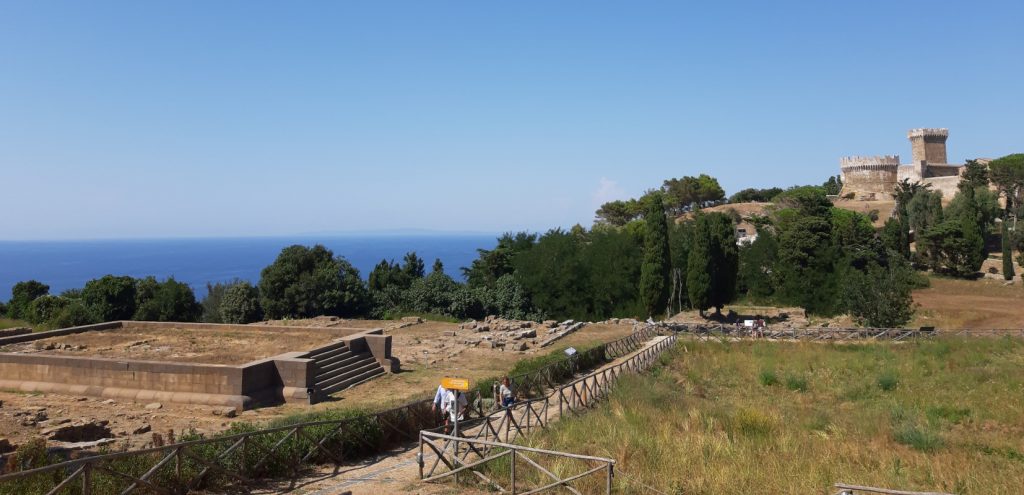Strolling through archaeology and nature in Populonia and Baratti
A short walk from the coast leads to an extraordinary archaeological area and the discovery of the treasures of the Etruscan civilisation.
The ancient village of Populonia lies on the northern tip of the Piombino promontory, a spur overlooking the sea and the cradle of one of the most flourishing civilisations of the past, that of the Etruscans. The view overlooks the Gulf of Baratti to the north and to the south the sinuous coast forms the inlet, Buca delle Fate, where history, nature and legend combine. Three places of rare beauty and indisputable charm where the Etruscan civilisation reached the peak of its splendour.
Populonia was an influential city in ancient Etruria and the only one to be established on the coast; ancient glories of which many traces have survived and are well preserved and which can be enjoyed today with one eye on the crystal clear sea and the other on this fascinating period in history. The area is an archaeological treasure chest full of Etruscan remains that are protected and made accessible by the Archaeological Park of Baratti and Populonia.

The best way to begin your discovery of the Etruscans is to enter the mighty 15th century walls of the castle of Populonia and stroll through the streets to the top of the fortress to breathe in the sea breeze and the history on display in the Gasparri family private collection kept in the Etruscan Museum. The walk can only culminate with a visit to the acropolis just outside the walls; this is the highest part of the archaeological park and preserves the monumental remains and traces that testify to the importance of Populonia in Etruscan and Roman times, up to its transformation in the Middle Ages.
The Etruscan necropolises are located in various sites at the foot of the promontory and around the Gulf of Baratti, where the park has as second entrance and info point. Connecting the upper and lower parts, a network of pleasant paths through the Mediterranean maquis and partly on ancient paved roads offers beautiful glimpses of the sea and leads to the fortified city, residential area and temples and then to the necropolis of burial mounds, graves and chamber tombs dug into the rock. One of the largest and best-preserved is the Tomba dei Carri in the necropolis of San Cerbone.

To find out more:
